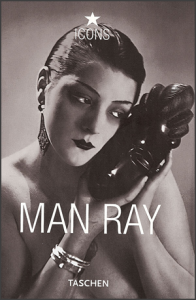Flying solo from soup to nuts is a terrifying and exhilarating thing.
The process and project is based of my new found love of Man Rey, a modern artist that was close friends with Dali and one of the paramounts in the surrealist movement. Time to get to work.
First Steps: Game Design Document
The GDD is a bane for both AAA studios and indie developers; mainly because it’s the ever present gatekeeper to the fun-fun which is game development and design. No one wants to think and plan and write schematics about gameplay, scoring system, enemies and recyclable frameworks; it takes too much time to hash out since the average GDD can run up to 100 pages, too much effort to constantly update especially on a tight schedule and why make a GDD when you can rip code for other tutorials that work and copy pasta all over the place?
I had these feelings myself. I wanted to have fun and to tinker, but I also knew that if I went the fun route, I would never finish anything, let along a first in solo projects. What to do? What to do? How could I have a solid roadmap that was flexible enough for pivoting ideas, but robust enough to see, and record progress?
Taking the model of a Lean Canvas and modifying it to the creative needs of game development and design, it helped keep my thoughts organized, keep a solid roadmap all while making the documentation investment seven shades less of insane. I kept a simplistic goal of enemies, player characters, weapons, lives, scoring while asking questions about asset creation, audio and polish. A mobile game can be whipped out in under a week, but I find quick iteration is not the best when it comes to a polished experience. Using a game canvas helps with focus on the experience so there will not be a painful post-mortem afterward.
After playing with a few apps and wrapping my head around the details on what it takes to make something solid, I remembered how important min-spec is. Min spec for the layman, means minimum specification, or requirements, that are needed to run the game/pp. Since I don’t have any fancy tablets, just a Motorola Xoom, I thought that would be min-spec enough since it’s no longer high end and since it’s amazinginly slower than the newer Android tablets, it would be perfect to bench mark with. Maybe low spec is the best spec, I don’t know.
Second Steps: IDE and APIs
After 4 heavy years of learning code, writing and rewriting frameworks based on OOP AS3 , I said nuts to that shit when the time arose to have a reusable framework. I tinkered with writing my own, but found that more daunting and discouraging . I didn’t get into design to be a systems guru, I came into design to design and make things. So I experimented with both Flashpunk and Starling. I did favor Flashpunk at first since it was more accessible and used less ‘gimmicky’ than Starling, but sadly…this API was abandoned or merged with something else and Frankencode was born. I turned to Starling. Is it GPU friendly? Yes. Was it designed with mobile devices in mind?Yes. Was it updated consistently? Yes. Starling wins. Unity will come later, but Starling is for the now.
The IDE was easy enough. Although I worked with Adobe’s IDE via CS5, I hated every minute of it’s slow, clunky and not intuitive for mobile development. Cruising the web brought the ripe fruit of Flashdevelop. Sweet, sweet Flashdevlop. I <3 you.
Third Step: Art, Music and First Pass
My lovely co-conspirator DJ Mugshot offered his musical talents while I slapped together a first pass showing gameplay, UI flow and general feel. He excitedly got to work making one long piece: Try Angles and then worked on the list of sound effects provided. I like the piece. At first I was expecting a slower tempo collection, but the more I listened the more I like the pace.
Mugshot hails from across the pond via UK and actively composes music. To control costs and keep quality control reigned in, I decided to do the art assets myself, keeping it simple, but tasteful.
The first pass is in slow progress since I work for the man, have multiple night classes and need sleep. But generally, the progress consistent. The process aroused questions in me about crunch, what does a coder/game designer really look, and act, like and how creativity can be snuffed out by greed. Money does make the world go round but Flappy Bird clones do not. That, fortunately, will wait until the post mortem.
***
I’m not above asking for tips!
Bitcoin: 1zcqAZaq99XYnWdDCWsYEVX4rwb5ikyvz
Doge: DKERrZi1VLbaJovo6xFWz76dQq3826DP93
